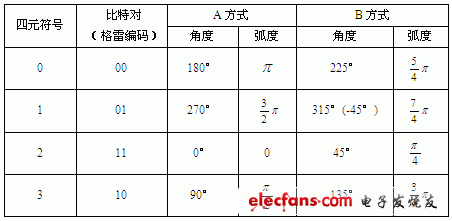PM-QPSK technology has high spectral efficiency, reduces the baud rate of transmitted symbols to one-quarter of binary modulation, and can greatly improve the optical signal-to-noise ratio, and can use powerful DSP to handle polarization mode multiplexing signal. The article analyzes the basic principles of PM-QPSK modulation and demodulation, and analyzes the receiver front-end optical demodulator in a 100G system in detail. introduction PM-QPSK (PolarizaTIon-mulTIplexed Quadrature Phase Shift Keying) signal uses coherent detection technology on the receiving side to achieve high-performance signal demodulation, which is similar to direct demodulation and differential demodulation In contrast, the power of the local laser used for coherent detection is much greater than the optical power of the input optical signal, so the optical signal-to-noise ratio can be greatly improved [1]. Especially the coherent detection technology makes full use of the powerful DSP (Digital Signal Processing) technology to process the polarization mode multiplexed signal, which can be compensated and reconstructed by subsequent digital signal processing, and the transmitted signal can be restored Characteristics (polarization mode, amplitude, phase), greatly eliminate the transmission damage caused by the fiber, such as PMD (PolarizaTIon Mode Dispersion, polarization mode dispersion) tolerance of up to 30ps, without line dispersion compensation can tolerate tens of thousands of ps / nm, Compared with other 100G transmission schemes, such as non-coherent PM-DQPSK or OFDM (Orthogonal Frequency Division MulTIplexing, orthogonal frequency division multiplexing technology), PM-QPSK combined with coherent detection provides the most optimized solution, which is most The system supplier chooses the 100G transmission scheme. PM-QPSK modulation principle Quaternary Phase Shift Keying (QPSK) is a multivariate (4-element) digital frequency band modulation method. The sinusoidal carrier of the signal has 4 possible discrete phase states, each carrier phase carries 2 binary symbols, the nth The QPSK signal of the time slot can be expressed as: (1) Among them, A is the amplitude of the signal, which is a constant; θn is the phase of the modulation, and its value has four possibilities, the specific value is determined by the symbol value transmitted in the time slot; fc is the carrier frequency; Ts is the quaternary symbol interval. There are two sets of four phase values ​​commonly used in QPSK, which are called A mode and B mode. If they are 0, π / 2, π, 3π / 2, the vector diagram of the QPSK signal with the initial phase of 0 is shown in Figure 1 below. Mode A; if it is π / 4, 3π / 4, 5π / 4, 7π / 4, the vector diagram of the QPSK signal with the initial phase of π / 4 is shown as mode B in Figure 1. QPSK modulation is in response to incoming code pairs (00, 01, 10, 11), and phase shifts the optical carrier. Table 1 shows the two bits corresponding to the quaternary symbol and the two sets of phase values ​​of A and B [2]. A single 100Gbps is divided into two polarization modes-TE (transverse electric mode) and TM (transverse magnetic mode) two 50Gbps streams, this step generates two carriers of the same frequency, and then each carrier is QPSK modulated, Because QPSK modulation encapsulates 2 bits into one symbol, the two polarized modes can obtain two streams of 25G symbols / second respectively, totaling 100Gbps. Because the QPSK signal is transmitted in the form of multiple polarization planes with two polarization planes, it can be called DP-QPSK (dual polarization QPSK), or PM-QPSK (polarization mode QPSK). Figure 1 QPSK A and B two ways vector Table 1 Two sets of phase values ​​of QPSK Jiangmen Hongli Energy Co.ltd , https://www.honglienergy.com
